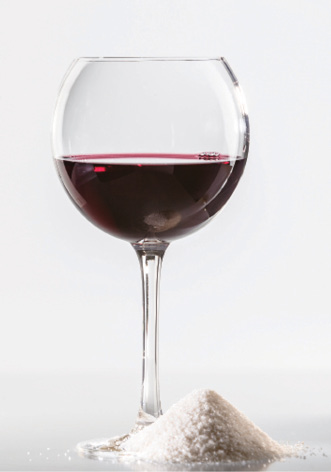Brettanomyces has been known to take hold of wines —and entire wineries — destroying countless hours of hard work that was put into creating these wines. However, there are also regions in the world such as Bordeaux where Brett is an accepted characteristic found in many of the finest wines. So what do the pros think about Brett, and what are their best tips for keeping their wine safe? We found two who were happy to share their opinions and methods, which can be useful to your own home winery as well.
Winemaker: David Ramey, Ramey Wine Cellars, Healdsburg, California
The mere presence of Brettanomyces does not mean spoilage, if one keeps the wine healthy. As the levels of 4-ethylphenol and 4-ethylguaiacol rise in a wine, the nose goes from cedar to tobacco, to leather, to sweaty saddle, to horsey, to barnyard. At high levels one can’t discern the grape variety. Many of us don’t mind or even like the complexity of cedar and tobacco — but it’s difficult to control and dial in “just right,” so if one includes Brett deliberately or allows it to get out of control many consumers and critics may not like the wine. No matter how much you may enjoy the complexity of a little Brett in your wine, allowing favorable conditions for Brett development also allows for the development of other undesirable microbes such as Acetobacter, so I’d never recommend trying to contribute any Brett to your wines.
We use all native yeast and all native bacteria, and all Ramey wines are bottled unfiltered. In regards to testing, we run 4-ethylphenol tests whenever our red wine is consolidated, about every four months. We don’t plate or run Scorpions (yeast and bacteria panels designed to detect spoilage microbes). This is because we’re not looking for the presence of Brett but for any misbehavior. If we looked for Brett cells we would find some, but we have no 4-ethylphenol at all in our cellars. The question is, do the Brett cells act out? Just as our human biome contains 10,000 more bacterial cells than human, the complex microbial mix in wine is not in and of itself a bad thing. What is important is that these microbes do not misbehave. Just as we might catch a cold or the flu if we let ourselves get rundown, low sulfur wine creates an environment more favorable for microbial misbehavior. The infatuation with low sulfur wine is responsible for all sorts of unpleasant flavors. And for those who are worried about SO2 levels in wine, it is important to recognize that one would get
far more SO2 eating a half-dozen or so dried apricots than drinking a bottle of wine.
I’ve experienced unwanted Brett in a winery a number of times. To control it, I’ve found that old-fashioned use of sulfur dioxide is your best friend. Make sure the must has a total SO2 of 40 ppm and that finished wines maintain at least 30 ppm free SO2. Sulfur gas your barrels when racking finished wine. Egg white fine your red wines with two to six egg whites per barrel (one or less in a 5-gallon/19-L carboy); egg whites reduce microbial population and have an antiseptic effect, as well as clarifying the wine and polishing the tannins. If you are receiving used barrels, steaming them would be the best insurance against many spoilage organisms as well as old, dried out wine residue.
Winemaker: Chad Sletten, Sand Castle Winery & Vineyards, Bucks County, Pennsylvania
Though not true to our desired flavor profile, some winemakers consider a touch of Brettanomyces to create their signature style. However, once Brett takes hold of some cellars, it becomes an often-permanent fixture. For large production, we do not recommend inoculating cultured Brett in wine production. Strict oversight of produced or aged wines is vital, and we would advise the same practices to home winemakers.
Brett can develop at any time from growth on the grapes to final bottling. Prevention for us is increasingly simple by integrating biotechnology (higher concentrations of SO2), allowing for limited time on the grapevine, more vat time, and less barrel time. The approach to managing Brett lies in early detection. We watch the process of fermentation after processing the wine. This includes monitoring the yeast. Our winemakers check the young wine every day and older vintages (if they have not been filtered) once per month. Brett has never been an issue here as controlled cellar sterilization is of vital importance. That oversight is equally important for home winemakers who do not wish to introduce Brett into their wines.
It’s also important to remember that any (native) yeast will not perform the same if you start with a similar culture as the prior year. It may be either better or worse, but it will not be the same from year to year.





